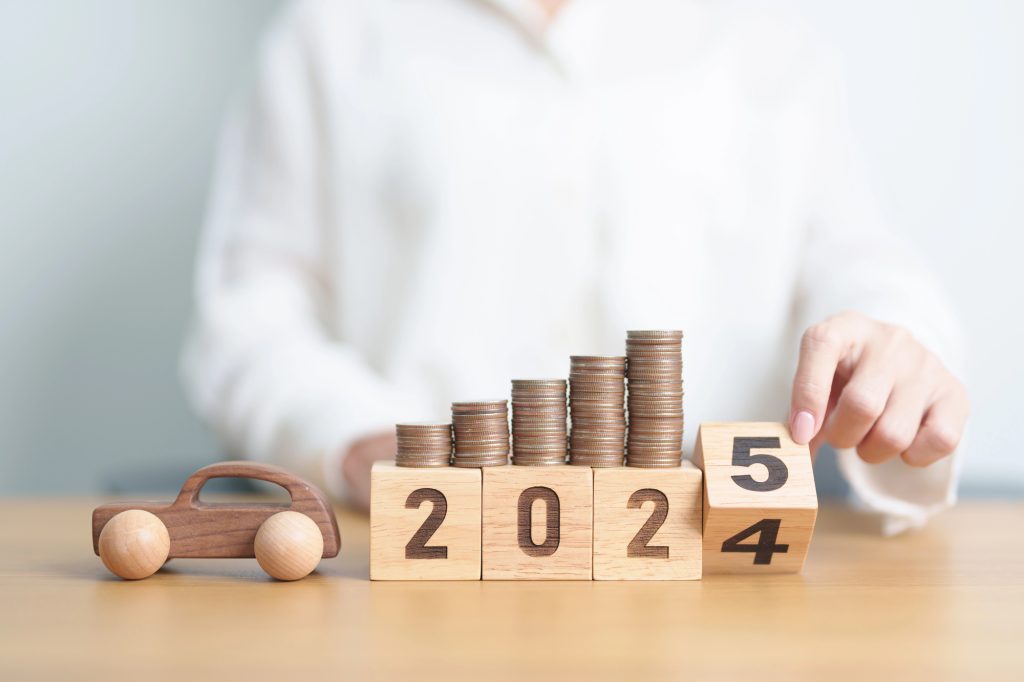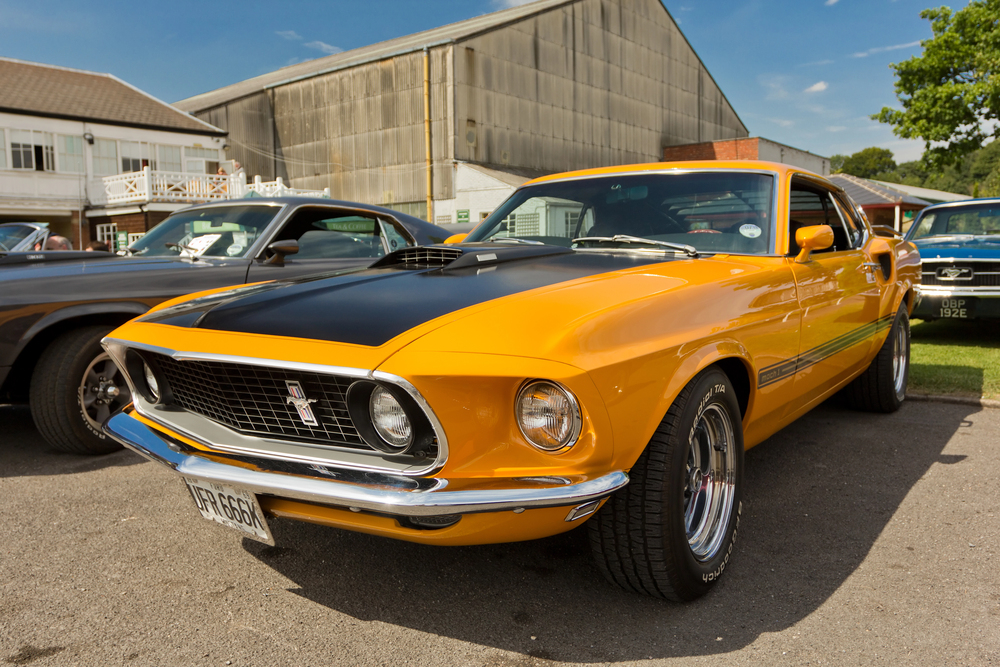The automotive market is on the verge of a major shake-up, and 2025 is shaping up to be a year of unexpected challenges. Interest rates are rising at a pace that has caught buyers, dealers, and manufacturers off guard, creating uncertainty in an already volatile industry. Many consumers are rethinking their purchasing decisions as loan costs skyrocket, pushing affordability out of reach. Automakers, in response, are scrambling to adjust strategies to keep sales flowing while contending with higher financing costs.
Car Loan Payments are Surging

As interest rates continue to climb, monthly car loan payments are increasing dramatically. Buyers who once qualified for low-interest financing are now facing significantly higher costs, making it harder to afford new vehicles. Many are either stretching their loan terms or shifting to the used car market to offset rising costs.
Leasing Becomes Less Attractive

With higher interest rates, leasing is no longer the budget-friendly option it once was. Monthly lease payments have risen alongside traditional auto loans, discouraging potential lessees from considering this financing method. More consumers are holding onto their current vehicles longer rather than committing to expensive new lease agreements.
Used Car Prices are Experiencing Volatility

While used car prices skyrocketed during the pandemic, the current market is seeing unpredictable fluctuations. Some segments are becoming more affordable due to declining demand, while others remain stubbornly high due to inventory shortages. Consumers are now carefully weighing whether to buy used or wait for better deals.
Automakers are Adjusting Incentives

To keep sales moving in a high interest environment, automakers are increasing incentives and rebates. Zero percent financing deals, which nearly disappeared, are making a cautious return for well-qualified buyers. However, these deals are often limited to specific models and trim levels, making them less accessible to all consumers.
Related: 14 Insanely Fast Cars Owned By Superstar Athletes
Luxury Car Sales are Declining

High interest rates are hitting luxury car buyers particularly hard, making premium vehicles even more expensive to finance. Many high income consumers are opting to delay purchases or explore pre-owned options instead. Luxury brands are now strategizing with special financing offers to retain their customer base.
Related: 13 Eye-Opening Truths About Full-Time Van Travel That Will Blow Your Mind
The EV Market Faces Uncertainty

Electric vehicles, once seen as the future of the industry, are now facing an uncertain path due to high financing costs. Consumers hesitant to take on large loans are second-guessing EV purchases, especially since incentives for electric cars have also shifted. Automakers may have to further reduce prices or offer creative financing solutions to maintain EV adoption rates.
Related: 12 Stunning Ways Solar-Powered Cars Will Change How We Buy And Drive
Credit Scores Are More Important Than Ever

With banks tightening lending criteria, a strong credit score is crucial for securing reasonable loan terms. Borrowers with lower credit scores are facing higher-than-average interest rates, pricing them out of the market. More consumers are working on improving their credit before attempting to finance a new car purchase.
Related: 11 Eco Friendly Materials That Are Revolutionizing Car Design
The Shift Toward Longer Loan Terms

To keep payments manageable, more buyers are turning to extended loan terms of 72 or even 84 months. While this lowers monthly costs, it results in paying significantly more interest over time. Experts warn that extended loans can lead to negative equity, where owners owe more than their car is worth.
Related: 12 Reasons Compact Pickups Are Making A Huge Comeback
Dealers are Struggling to Move Inventory

Higher interest rates are leading to sluggish sales, forcing dealerships to rethink pricing and promotional strategies. Some are offering deeper discounts to attract hesitant buyers, while others are pivoting to focus on used cars. The competitive landscape is changing rapidly, with dealers looking for ways to adapt to the financial strain.
Related: 11 Unstoppable Legacy Of Renault In Formula 1
The Role of Online Car Sales is Growing

Digital car sales platforms are seeing increased interest as buyers seek out better deals nationwide. Online marketplaces allow consumers to compare financing rates, negotiate remotely, and even get delivery without visiting a dealership. This shift is reducing dealer markups and giving buyers more control over their purchasing process.
Related: 11 Unstoppable Legacy Of Renault In Formula 1
Trade-In Values are Becoming Crucial

With affordability becoming a challenge, trade-in values are playing a bigger role in purchase decisions. Consumers looking to upgrade are counting on their current vehicle’s equity to soften the blow of high prices. Dealerships are using trade-in promotions to entice buyers who might otherwise hesitate.
Related: 12 Astonishing Dodge Convertibles That Ruled The Roads
The Rise of Subscription-Based Car Ownership

As traditional financing becomes less attractive, car subscription services are gaining traction. These programs allow consumers to drive a vehicle for a fixed monthly fee that covers maintenance and insurance, avoiding long-term debt. Automakers are investing in these alternatives to attract cost-conscious buyers.
Related: 11 Hidden Downsides Of Algae Biofuels No One Is Talking About
The car market in 2025 is facing a financial upheaval that is reshaping how people buy and finance vehicles. High interest rates are making affordability a central concern, forcing consumers and dealers to rethink their strategies. Some are waiting out the storm, while others are seeking creative solutions like longer loan terms, increased trade-in values, or subscription models. Automakers are adapting by shifting incentives and production priorities to meet changing demands.
Disclaimer: This list is solely the author’s opinion based on research and publicly available information.
11 Ways US Commercial Transportation Has Evolved Over The Decades

Commercial transportation in the U.S. has transformed dramatically over the years, adapting to technological advancements, economic shifts, and changing consumer demands. From railroads to autonomous trucks, here are 11 major ways the industry has evolved.
Read it here: 11 Ways US Commercial Transportation Has Evolved Over The Decades
13 Eastern European Cars That Spark Nostalgia

Eastern Europe has produced some of the most distinctive, rugged, and endearing cars in automotive history. Whether built for utilitarian purposes, rallying glory, or quirky charm, these vehicles hold a special place in enthusiasts’ hearts. Here are 13 Eastern European cars that bring back fond memories.
Read it here: 13 Eastern European Cars That Spark Nostalgia
13 Reasons People Are Ditching Car Payments for Ride-Sharing and Rentals

Owning a car is becoming less appealing as high costs, maintenance headaches, and restrictive financing push people toward alternative transportation options. With the rise of ride-sharing, flexible rentals, and subscription based mobility, more drivers are questioning whether car ownership is even necessary. From financial savings to lifestyle freedom, here’s why many are ditching car payments for good.
Read it here: 13 Reasons People Are Ditching Car Payments for Ride-Sharing and Rentals
You’ll love these related posts:
- 11 Crazy Things Smart Tires Can Do
- 15 Ways AI Is Silently Revolutionizing Car Performance Tuning Behind The Scenes
- 11 Hidden Downsides Of Minimalist Car Interiors No One Is Talking About
- 14 Jaw Dropping Reasons Your Car Keys Might Disappear Sooner Than You Expect
- 13 Insane Ways Scientists Are Growing Car Parts Like Living Organisms


